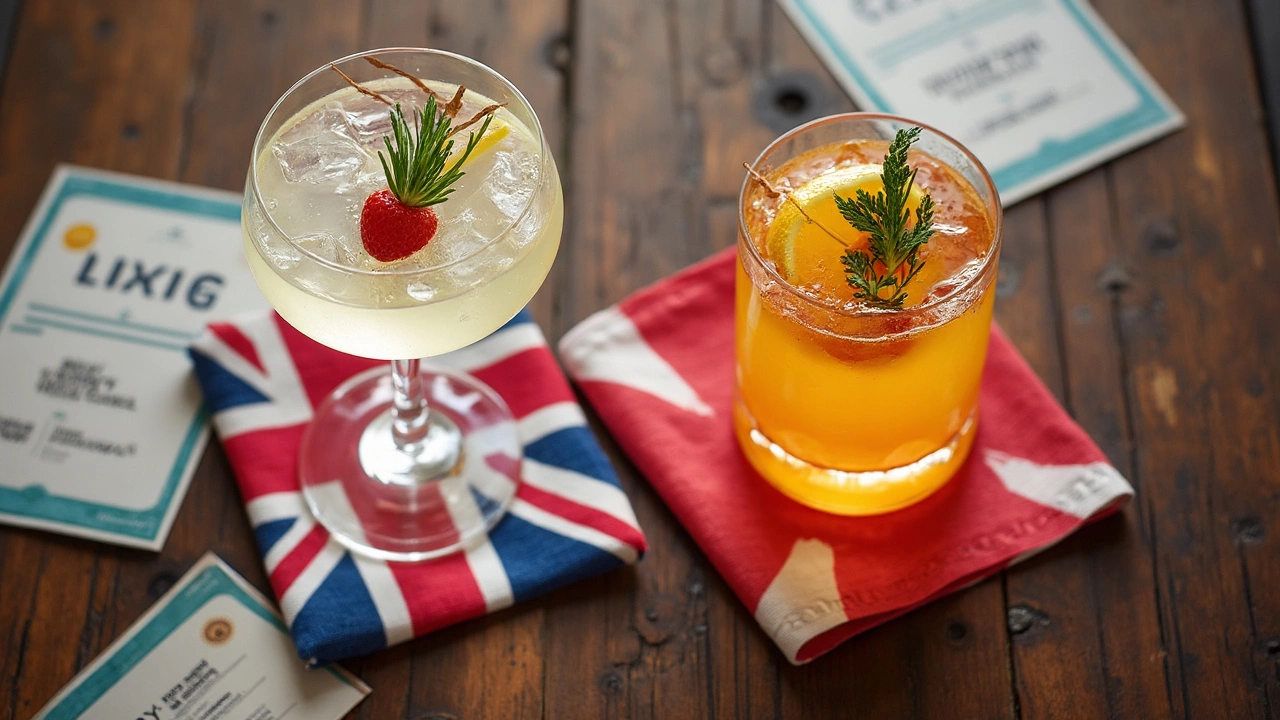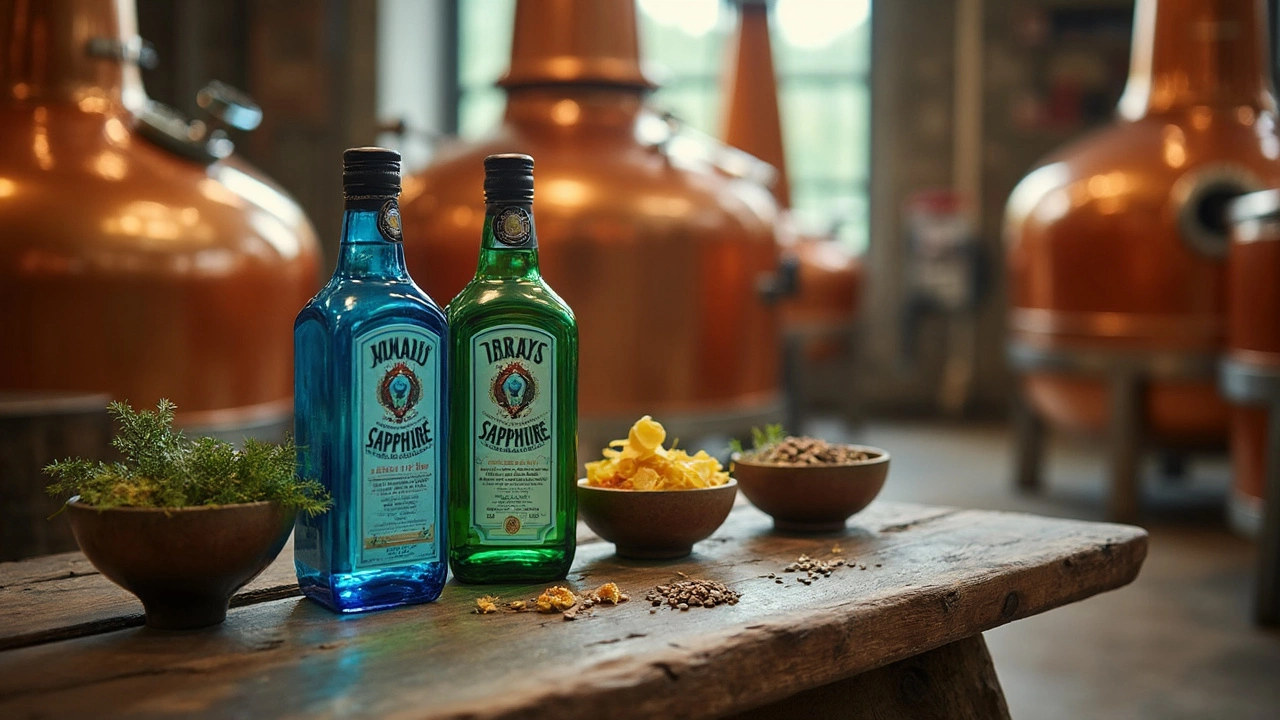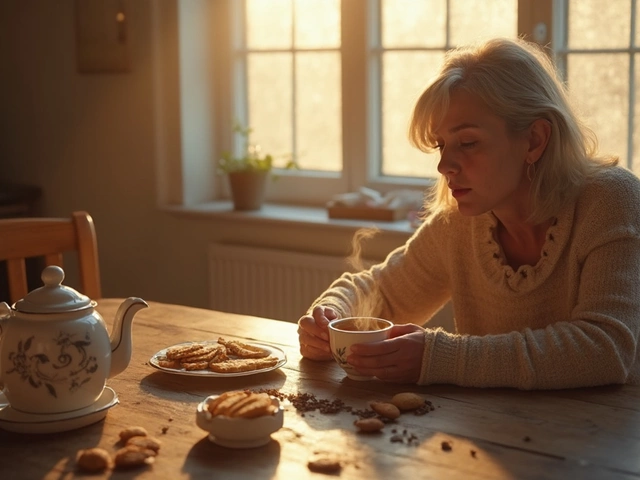Standing in a gin shop or at a distillery, you might wonder why two bottles can both say Bombay but taste nothing alike. The labels look similar, but what you’ll pour in your glass tells a different story. If you mix up Bombay Sapphire and regular Bombay gin, you’re not alone—lots of folks think they’re the same just because of the name. That’s far from true.
Understanding the difference isn’t just good for trivia night. When you’re touring a distillery or picking a bottle for your next gin and tonic, knowing what’s inside can change the whole experience. Bombay Sapphire, with its blue bottle, is almost everywhere these days—but it’s a pretty new kid compared to classic Bombay gin. So before you sip, or book that distillery tour, let’s clear up what really makes these gins different. Watch out, because even seasoned gin fans sometimes get this one wrong.
- Bombay Gin: A Quick Background
- Bombay Sapphire: The Modern Twist
- How Their Flavors Stack Up
- Which One to Try on a Distillery Tour
- Tips for Tasting and Enjoying
Bombay Gin: A Quick Background
Alright, here’s where it all starts—regular Bombay gin. This is actually called Bombay Original London Dry Gin, and it’s been around since 1761. That’s a lot of years making gin, and it gives this one some serious credibility among old-school gin fans. The recipe uses the classic London dry style, focusing on the basics: juniper, coriander, angelica, and a few other botanicals. Nothing super fancy or wild, just what’s expected from a proper gin.
Back when Bombay gin first hit the shelves, gin was mostly clear, crisp, and straightforward. It made a killer martini or gin and tonic, mostly because the flavors didn’t get in the way. The key point: Bombay gin’s profile leans heavy on juniper (that piney taste), with just a bit of citrus and earthy notes in the background. If you’re into traditional gins, this one is pretty much what you’re picturing.
The production method is also classic. The botanicals are added directly into the spirit for distillation—no vapor infusion or fancy tricks like you’ll see with Bombay Sapphire. Everything’s run through a copper still, which keeps the spirit clean and sharp. Check out this quick summary for how it compares to modern gins:
| Gin Name | Method | Main Flavor | Year Introduced |
|---|---|---|---|
| Bombay Gin | Traditional Distillation | Juniper-forward | 1761 |
| Bombay Sapphire | Vapor Infusion | Citrus, Floral | 1987 |
If you ever spot Bombay gin in stores or on a distillery tour, you might notice the clear bottle and simple label. That’s on purpose—they want to show you this is all about tradition. Next time you see it, remember: it’s not just another bottle on the shelf, but a piece of gin history.
Bombay Sapphire: The Modern Twist
If you’ve spotted that bright blue bottle at a bar, you’ve seen Bombay Sapphire. This gin hit the shelves in 1987, making it way newer than the old-school Bombay Dry Gin. It’s not just the color that’s different. Bombay Sapphire comes with a whole new approach to taste and production.
Bombay Sapphire uses a special vapor infusion process. Instead of boiling the botanicals right in the alcohol, they hang them above the spirit. As the alcohol vapors pass through, they pick up flavors from things like juniper, lemon peel, coriander, and even stuff like orris root and grains of paradise. That’s why the flavor feels lighter, with a bunch of different notes instead of just smacking you with juniper.
This gin has ten botanicals, and they advertise it proudly. Here’s a quick look at what goes into Bombay Sapphire:
- Juniper berries
- Lemon peel
- Coriander
- Angelica root
- Orris root
- Almonds
- Liquorice
- Cassia bark
- Grains of paradise
- Cubeb berries
The result? You get a gin that’s smooth, a little floral, and has hints of spice and citrus. It’s easy to mix or sip straight. Maybe that’s why it’s a top choice for gin and tonics at fancy bars and even at home.
For folks who geek out on numbers, check this out:
| Launched | Botanicals | Distillation Style | ABV* |
|---|---|---|---|
| 1987 | 10 | Vapor Infusion | 40%-47% (depends on region) |
*ABV stands for Alcohol By Volume. It can change depending on where you buy your bottle, but most commonly it sits at 47% in the US and 40% in the UK.
If your gin tastes usually seem boring, Sapphire’s subtle approach could flip your opinion. It’s a modern take that’s steered lots of people into the world of premium gins—and it’s usually front and center on any gin distillery tours with good reason. Try it neat or in a mixed drink and see what pops out for you.

How Their Flavors Stack Up
The flavors of Bombay Sapphire and traditional Bombay gin don’t just taste a little different—they're noticeably unique if you pay attention. Most folks know Bombay Sapphire for its crisp, balanced profile and the blue-tinted bottle that grabs your eye on any bar shelf. The magic comes from its ten botanicals, including almond, lemon peel, juniper, licorice, and even grains of paradise. The recipe is no secret, but the way the flavors work together stands out. You'll taste more floral and earthy notes, and the finish is clean, almost citrusy. It's designed to be bright, not just juniper-heavy like some old-school gins.
Now, regular Bombay gin (sometimes labeled as Bombay Original or just Bombay Dry) skips a couple botanicals you’ll find in Sapphire, so the taste is more straightforward. This one puts juniper front and center. It's drier, with a sharper bite and way less of that soft, rounded feeling you get from Sapphire. Think of it as a London Dry gin, but slightly lighter—nothing fancy. Just solid, peppery juniper, a hint of spice, and some dryness at the back.
Here’s a quick side-by-side so you can spot the big differences when you sip:
| Tasting Note | Bombay Sapphire | Bombay Gin (Original/Dry) |
|---|---|---|
| Botanicals | 10 total; includes cubeb berries, grains of paradise, almond | 8 total; less complex botanicals |
| Flavor Style | Balanced, citrus, floral | Juniper-forward, dry, peppery |
| Best For | Modern cocktails, gin & tonics | Classic martinis, old-school G&Ts |
| Alcohol Content | Typically 47% in the US, 40% in the UK | Usually around 43% |
If you like a gin that’s a bit more interesting and works great in cocktails, Sapphire is your pick. But if you want something direct with a stronger bite of juniper and less going on in the background, the original Bombay gin (Dry) delivers. Either way, knowing these differences makes those tasting room flights or home cocktails way more fun.
Which One to Try on a Distillery Tour
If you’re mapping out a distillery trip and trying to decide between Bombay Sapphire and traditional Bombay gin, here’s what the real experience looks like. The Laverstoke Mill in Hampshire, England, is the official home of Bombay Sapphire. This is the spot most folks think of when they picture a gin distillery tour—and for good reason. The place is packed with history and shiny copper stills, and every tour is built around Bombay Sapphire’s unique distilling methods and botanicals.
Now, here's the kicker: classic Bombay Dry Gin (the one with the white label) actually predates Sapphire. While the original Bombay recipes date back to 1761, the Sapphire recipe came to life in 1986 when the brand wanted to make something crisper and lighter. At Laverstoke Mill, you’ll mainly find tours and tastings focused on Bombay Sapphire—not so much the traditional Bombay Dry Gin, at least not as the star of the show. You can sometimes sample both, but Sapphire is the highlight everywhere you look—from the bartenders to the tasting flights.
- If you’re looking to compare the two, ask for a tasting that includes both so you can taste them side by side. Some distillery guides will set this up on request.
- Want to know how Sapphire’s flavors work in cocktails? Many tours offer mixology sessions with hands-on shaker time. You can see just how much difference the botanical mix makes.
- Don’t miss the glasshouses at Laverstoke Mill—these show off all ten botanicals used in Bombay Sapphire and give you a noseful of what makes its flavor pop.
Your best bet? Go where Bombay Sapphire is made and enjoy the full experience. You’ll come away knowing the story behind that iconic blue bottle and understand why Sapphire became such a big name in gin bars around the world. If you want to try Bombay Dry Gin side by side, make sure you ask ahead, because distilleries focus way more on Sapphire right now.

Tips for Tasting and Enjoying
There’s no need to get fancy when trying Bombay Sapphire or classic Bombay gin, but a few pointers make a big difference. First, always use a clean glass—leftover soap or last night’s gin and tonic flavors can mess with your first sip.
Try both neat (no ice, no mixers) before adding anything else. When you taste them side by side, you’ll notice Bombay Sapphire usually feels lighter and a bit more citrusy, while original Bombay gin hits stronger with juniper and spice. A small splash of cold water or one ice cube can open up flavors. Don’t drown the gin—that covers up what makes them unique.
- Sniff first. Smell tells you a lot. Swirl the gin gently and take a breath in—Sapphire often gives off lemon and floral notes; regular Bombay leans earthy.
- Sip slowly. Let it roll over your tongue. See what flavors stand out—pine, pepper, lemon, or coriander?
- Try in a simple gin and tonic. Use a neutral tonic water and a basic garnish: lime for Sapphire, maybe orange or lemon peel for classic Bombay. Keep it simple so you can really taste the gin.
- Chilled gin is smoother. If room-temp gin feels harsh, just cool the bottle before pouring. No need for fancy gear.
On distillery tours, you’ll sometimes get to taste from the source where the gin is made. Pay attention to how the staff do their tastings—there’s a reason they often let you sip neat, then add just a drop or two of water. They want you to catch how those famous botanicals punch through.
| Gin | Main Flavors | Best Garnish |
|---|---|---|
| Bombay Sapphire | Citrus, floral, light spice | Lime wedge or peel |
| Bombay Dry Gin | Juniper, coriander, earthy | Lemon or orange peel |
If you want a quick comparison, try making a martini with each. Sapphire’s citrusy kick stands out, while original Bombay gin holds up better if you love bold juniper. Stick to basic recipes—going overboard with syrups or juices hides what makes these gins unique.


